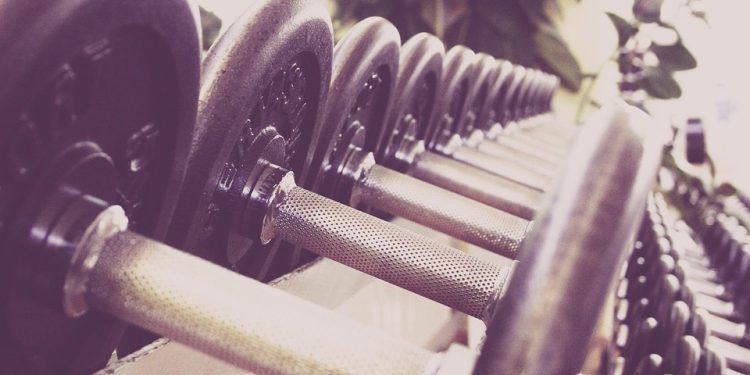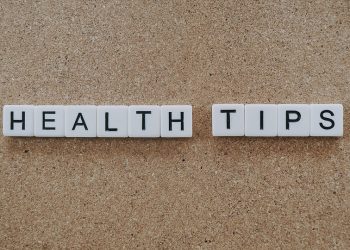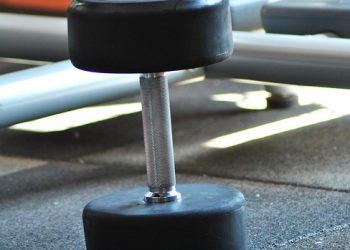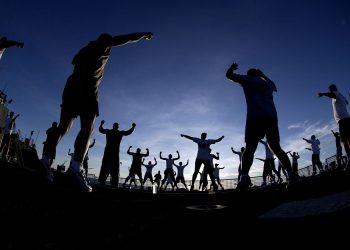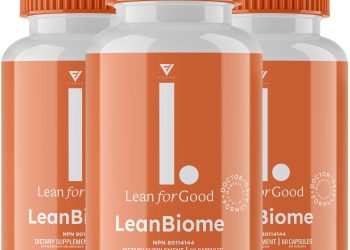Gym Workouts for Weight Loss: Your Complete Guide
Embarking on a weight loss journey can feel daunting, but incorporating gym workouts into your routine can significantly accelerate your progress. This guide provides a comprehensive overview of effective gym exercises, workout plans, and essential tips to help you achieve your weight loss goals.
Understanding the Basics of Weight Loss
Weight loss fundamentally comes down to creating a calorie deficit – burning more calories than you consume. While diet plays a crucial role, regular exercise, especially gym workouts, helps you burn those extra calories and build muscle mass, which further boosts your metabolism.
The Calorie Deficit Explained
To lose one pound of fat, you need to burn approximately 3,500 calories more than you consume. This deficit can be achieved through a combination of dietary changes and increased physical activity. A healthy and sustainable weight loss rate is generally considered to be 1-2 pounds per week.
Cardio vs. Strength Training: Which is Best for Weight Loss?
Both cardiovascular exercise (cardio) and strength training are essential components of a weight loss program. While cardio burns calories during the workout, strength training builds muscle, which increases your resting metabolic rate – meaning you burn more calories even when you’re at rest.
Cardiovascular Exercise (Cardio)
Cardio exercises elevate your heart rate and breathing, burning a significant number of calories in a short period. Examples include:
- Running/Jogging: A high-impact exercise that burns a lot of calories.
- Cycling: A low-impact alternative that’s easier on the joints.
- Swimming: A full-body workout that’s gentle on the body.
- Elliptical Trainer: Provides a low-impact, full-body workout.
- Stair Climber: Effectively targets the lower body and burns calories.
- Rowing Machine: Engages multiple muscle groups for a comprehensive workout.
Strength Training
Strength training involves using resistance to build muscle mass. This can be done with weights, resistance bands, or bodyweight exercises. Benefits of strength training for weight loss include:
- Increased Muscle Mass: More muscle means a higher resting metabolic rate.
- Improved Body Composition: Strength training helps you lose fat and gain muscle, leading to a leaner physique.
- Enhanced Bone Density: Strength training helps prevent osteoporosis.
- Increased Strength and Endurance: Makes everyday activities easier.
Effective Gym Exercises for Weight Loss
Here’s a list of highly effective gym exercises that can contribute significantly to your weight loss journey:
Cardio Exercises:
- High-Intensity Interval Training (HIIT): Involves short bursts of intense exercise followed by brief recovery periods. HIIT is highly effective for burning calories and improving cardiovascular fitness. Example: 30 seconds of sprinting followed by 30 seconds of walking, repeated for 20 minutes.
- Steady-State Cardio: Maintaining a consistent pace for a longer duration. Example: Jogging on the treadmill for 30-45 minutes at a moderate intensity.
- Incline Walking: Walking on an inclined treadmill increases calorie burn and engages the glutes and hamstrings.
Strength Training Exercises:
Compound Exercises (Engage Multiple Muscle Groups):
- Squats: Targets the quads, glutes, and hamstrings. Proper form is crucial to avoid injury. Stand with feet shoulder-width apart, lower your hips as if sitting in a chair, keeping your back straight.
- Deadlifts: A full-body exercise that works the back, legs, and core. Start with lighter weights to master the technique. Stand with feet hip-width apart, bend at the hips and knees to grip the bar, keeping your back straight. Lift the bar by straightening your legs and back.
- Bench Press: Targets the chest, shoulders, and triceps. Lie on a bench, grip the bar slightly wider than shoulder-width, lower the bar to your chest, and then push it back up.
- Overhead Press: Works the shoulders, triceps, and core. Stand with feet shoulder-width apart, hold the barbell or dumbbells at shoulder height, and press them overhead.
- Rows: Targets the back and biceps. Can be done with a barbell, dumbbells, or a cable machine. Bend at the hips, keeping your back straight, and pull the weight towards your chest.
Isolation Exercises (Target Specific Muscle Groups):
- Bicep Curls: Targets the biceps. Stand with feet shoulder-width apart, hold dumbbells, and curl them up towards your shoulders.
- Tricep Extensions: Targets the triceps. Can be done with dumbbells, a cable machine, or overhead. Extend your arm at the elbow, squeezing the tricep.
- Leg Extensions: Targets the quadriceps. Use a leg extension machine to extend your legs against resistance.
- Hamstring Curls: Targets the hamstrings. Use a hamstring curl machine to curl your legs against resistance.
- Calf Raises: Targets the calf muscles. Stand on a slightly elevated surface and raise up onto your toes.
Sample Gym Workout Plans for Weight Loss
Here are three sample workout plans that you can adapt to your fitness level and goals. Remember to consult with a healthcare professional or certified personal trainer before starting any new workout program.
Workout Plan 1: Beginner (3 Days per Week)
This plan focuses on building a foundation of strength and endurance. Rest for 60-90 seconds between sets.
- Day 1: Full Body
- Squats: 3 sets of 10-12 reps
- Push-ups (or knee push-ups): 3 sets of as many reps as possible (AMRAP)
- Dumbbell Rows: 3 sets of 10-12 reps per arm
- Overhead Press: 3 sets of 10-12 reps
- Plank: 3 sets, hold for 30-60 seconds
- 30 minutes of brisk walking on the treadmill
- Day 2: Cardio
- 30 minutes of elliptical training at a moderate intensity
- Day 3: Full Body
- Lunges: 3 sets of 10-12 reps per leg
- Dumbbell Bench Press: 3 sets of 10-12 reps
- Lat Pulldowns (or assisted pull-ups): 3 sets of 10-12 reps
- Crunches: 3 sets of 15-20 reps
- 30 minutes of cycling
Workout Plan 2: Intermediate (4 Days per Week)
This plan incorporates more challenging exercises and higher intensity cardio. Rest for 45-60 seconds between sets.
- Day 1: Upper Body
- Bench Press: 3 sets of 8-10 reps
- Dumbbell Rows: 3 sets of 8-10 reps per arm
- Overhead Press: 3 sets of 8-10 reps
- Bicep Curls: 3 sets of 10-12 reps
- Tricep Extensions: 3 sets of 10-12 reps
- Day 2: Lower Body
- Squats: 3 sets of 8-10 reps
- Deadlifts: 1 set of 5 reps, 1 set of 3 reps, 1 set of 1 rep (increase weight each set)
- Lunges: 3 sets of 10-12 reps per leg
- Hamstring Curls: 3 sets of 12-15 reps
- Calf Raises: 3 sets of 15-20 reps
- Day 3: HIIT Cardio
- 20 minutes of HIIT on the treadmill (sprint for 30 seconds, walk for 30 seconds)
- Day 4: Full Body
- Pull-ups (or assisted pull-ups): 3 sets of AMRAP
- Dips (or assisted dips): 3 sets of AMRAP
- Plank: 3 sets, hold for 45-75 seconds
- Russian Twists: 3 sets of 15-20 reps per side
- 30 minutes of brisk walking on the treadmill
Workout Plan 3: Advanced (5-6 Days per Week)
This plan is designed for experienced gym-goers and incorporates advanced techniques like supersets and drop sets. Rest for 30-45 seconds between sets.
- Day 1: Chest & Triceps
- Bench Press: 4 sets of 6-8 reps
- Incline Dumbbell Press: 3 sets of 8-10 reps
- Decline Dumbbell Press: 3 sets of 10-12 reps
- Tricep Dips: 3 sets of AMRAP
- Overhead Tricep Extensions: 3 sets of 10-12 reps (superset with close-grip bench press: 3 sets of 10-12 reps)
- Day 2: Back & Biceps
- Pull-ups: 4 sets of AMRAP
- Barbell Rows: 4 sets of 6-8 reps
- Lat Pulldowns: 3 sets of 8-10 reps
- Seated Cable Rows: 3 sets of 10-12 reps
- Bicep Curls: 3 sets of 10-12 reps (superset with hammer curls: 3 sets of 10-12 reps)
- Concentration Curls: 3 sets of 12-15 reps
- Day 3: Legs
- Squats: 4 sets of 6-8 reps
- Deadlifts: 1 set of 5 reps, 1 set of 3 reps, 1 set of 1 rep (increase weight each set)
- Leg Press: 3 sets of 10-12 reps
- Leg Extensions: 3 sets of 12-15 reps (drop set on the last set)
- Hamstring Curls: 3 sets of 12-15 reps (drop set on the last set)
- Calf Raises: 4 sets of 15-20 reps
- Day 4: Shoulders
- Overhead Press: 4 sets of 6-8 reps
- Lateral Raises: 3 sets of 10-12 reps
- Front Raises: 3 sets of 10-12 reps
- Rear Delt Flyes: 3 sets of 12-15 reps
- Shrugs: 3 sets of 15-20 reps
- Day 5: HIIT Cardio
- 25 minutes of HIIT on the bike (sprint for 45 seconds, rest for 15 seconds)
- Day 6: Active Recovery
- Light cardio, such as swimming or yoga, for 30-45 minutes
Tips for Maximizing Weight Loss at the Gym
Here are some additional tips to help you get the most out of your gym workouts for weight loss:
- Warm-up Properly: Before each workout, warm up your muscles with 5-10 minutes of light cardio and dynamic stretching.
- Cool Down and Stretch: After each workout, cool down with 5-10 minutes of light cardio and static stretching. This helps prevent muscle soreness and injury.
- Stay Hydrated: Drink plenty of water before, during, and after your workouts.
- Focus on Proper Form: Prioritize proper form over lifting heavy weights. This will help prevent injuries and ensure that you’re targeting the correct muscles.
- Progressive Overload: Gradually increase the weight, reps, or sets as you get stronger. This challenges your muscles and helps you continue to progress.
- Listen to Your Body: Don’t push yourself too hard, especially when you’re just starting out. Rest when you need to and don’t be afraid to modify exercises if you’re experiencing pain.
- Track Your Progress: Keep a workout journal to track your progress. This will help you stay motivated and identify areas where you can improve.
- Be Consistent: Consistency is key to achieving weight loss goals. Aim to workout regularly and stick to your plan as much as possible.
- Combine with a Healthy Diet: Remember that exercise is only one part of the equation. A healthy diet is crucial for weight loss. Focus on eating whole, unprocessed foods and limiting your intake of processed foods, sugary drinks, and unhealthy fats.
- Get Enough Sleep: Sleep is essential for recovery and muscle growth. Aim for 7-8 hours of sleep per night.
- Manage Stress: Stress can lead to overeating and hinder weight loss. Find healthy ways to manage stress, such as yoga, meditation, or spending time in nature.
Conclusion
Gym workouts are a powerful tool for weight loss when combined with a healthy diet and lifestyle. By incorporating a mix of cardio and strength training exercises into your routine, you can burn calories, build muscle, and improve your overall health. Remember to start slowly, focus on proper form, and gradually increase the intensity and duration of your workouts. With consistency and dedication, you can achieve your weight loss goals and enjoy the many benefits of a healthier, fitter you.
Frequently Asked Questions (FAQs)
Here are some frequently asked questions about gym workouts for weight loss:
- Q: How often should I workout at the gym for weight loss?
- A: Aim for at least 3-5 workouts per week, combining cardio and strength training.
- Q: How long should my gym workouts be?
- A: Workouts can range from 30-60 minutes, depending on the intensity and type of exercise.
- Q: Is it better to do cardio before or after strength training?
- A: It depends on your goals. If your primary goal is strength training, do cardio after. If your primary goal is cardio, do strength training after or on a separate day. Doing cardio before can fatigue your muscles, potentially impacting your strength training performance.
- Q: Can I lose weight by just doing cardio at the gym?
- A: Yes, you can lose weight with cardio alone, but incorporating strength training will help you build muscle and boost your metabolism, making weight loss more efficient and sustainable.
- Q: What if I don’t have access to a gym?
- A: You can still lose weight with bodyweight exercises and outdoor activities. Consider exercises like squats, lunges, push-ups, planks, running, and hiking.
- Q: How long does it take to see results from gym workouts for weight loss?
- A: Results vary depending on your starting point, diet, and consistency. You may start noticing changes in your body composition and energy levels within a few weeks, with more significant results appearing after a few months.
- Q: What should I eat before and after my gym workouts?
- A: Before your workout, eat a small meal or snack that includes carbohydrates and protein, such as a banana with peanut butter or a protein shake. After your workout, consume a meal or snack that includes protein and carbohydrates to help your muscles recover and rebuild.
- Q: Are supplements necessary for weight loss?
- A: Supplements are not necessary for weight loss, but some may be helpful. Consult with a healthcare professional or registered dietitian before taking any supplements. Some common supplements for weight loss include protein powder, creatine, and caffeine.
- Q: I’m not seeing results. What am I doing wrong?
- A: Review your diet, workout routine, and sleep schedule. Ensure you’re in a calorie deficit, working out consistently, and getting enough rest. Consider consulting with a personal trainer or registered dietitian for personalized guidance.

